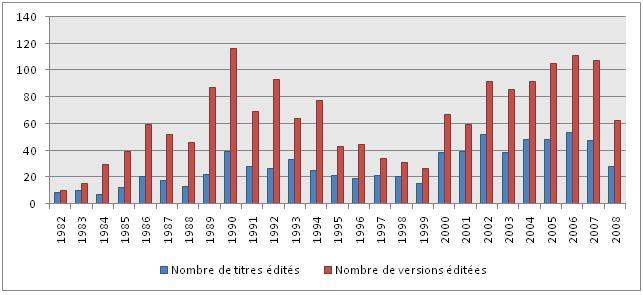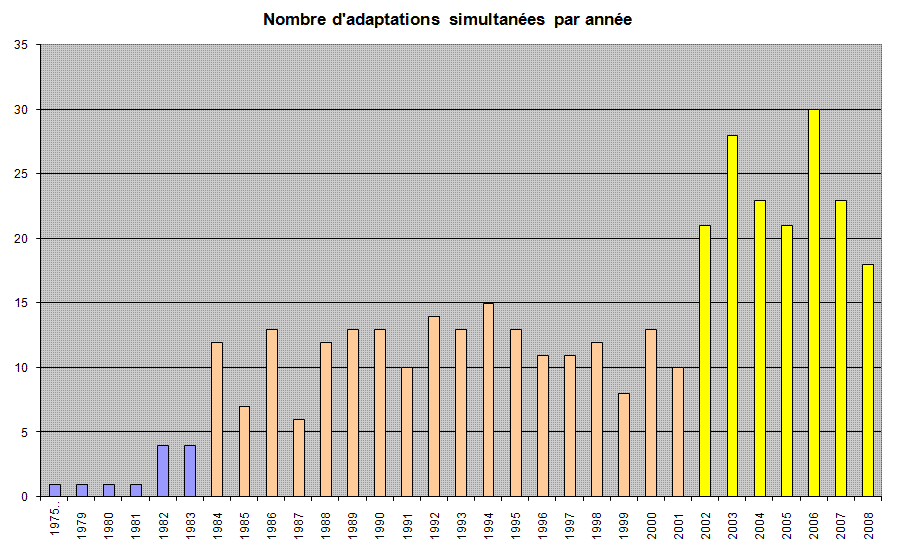From Cinema to Games: Some Fascinating Data
/I received correspondence recently from a French games scholar, Alexis Blanchet, sharing some really fascinating data that has emerged from his research into the flow of intellectual property between the games and film industries. Since I am finding this data useful in teaching my transmedia class, I wanted to pass it along to others who are interested in understanding the convergence of these two key sectors of the entertainment industry. First, a little background on Blanchet. According to his blog: "I'm teaching and doing research in film studies in Paris (Université Paris Ouest Nanterre La Défense). Formerly associated with the French National Library, member of the Observatoire des Mondes Numériques en Sciences Humaines (Omnsh), I'm currently studying the cultural, economical and technical synergies between cinema and the video game."

Blanchet has identified 469 games based around film properties released between 1975 and 2008. His research encompassed more than 40 different platforms, but did not include mobile phones, which he notes results in some undercounting of games based on Bollywood films which tend to appear primarily on cell phone technologies. He also excluded browser based games, which he felt tended to be more oriented towards branding than entertainment experiences.
For most of the platforms, movie-connected games represented roughly 10 percent of their total output. But for some platforms, they represented a much larger percentage of the total product. They were 22 percent of the titles produced for the Nintendo Game Boy Advance (2001-2006), 20 percent of the Nintendo Wii (2006-2007) and 27 percent of the Nintendo Game Boy Color (1999-2003). He ascribes the centrality of tie-in games to handheld technologies to their greater targeting at younger consumers.

As this graph suggests, there has been a dramatic shift over time from games released only after the film has been successfully released towards simultaneous release. It is now taken for granted within a range of genres that there may be a market for the game even if the film itself does not do well. This situation is especially ripe for transmedia storytelling, since it lends itself well to a co-creation rather than licensing model, allowing for the game and the film to be developed side by side and for their release to be coordinated more fully than would have been the case a decade ago.
Not surprisingly, Hollywood dominates the movie tie-in space representing 73 percent of the total, yet there are also European (8 percent) and Asian (4) movie tie-in games. And as already mentioned, the Asian numbers would have climbed considerably if mobile games were included in the count.
80 percent of the 134 international films which have made more than 100 million dollars upon release between 1991 and 2008 were adopted into games and of the top 20 money earners during this period, 95 percent were made into games: the holdouts were Titanic and The Dark Knight. And a Dark Knight game is finally on the way.
Franchises which extended across more than one film were especially strongly represented in his sample (and of course are also strongly represented in the list of top money earners during this period.) Of the 469 movie-based games, 231 of them were based on a franchise which had produced 2 or more films Almost all CGI animated films produced by Pixar, Disney/Pixar, Dreamworks Animation, 20th Century Fox Animation and others were adopted into games.
The most likely genres to make the transition from screen to games are: Action (236), Adventure (222), comedy (169) and Thriller (152). Those genres least likely to be made into games include documentary (2), Western (9), War (11), and Musical (23). It's worth noting that these also represent genres which are less likely to be made into films in the first place and that there are few non-film based games on the market in these genres.
Blanchet, a loyal follower of this blog, wanted to give Aca-Fan readers some exclusive content. He shared with me this graph which looks at film to game translations based around their original ratings.

For a closer look at some of the data, check out his website which includes an English language summary of his research as well as more extensive writings in French.
Blanchet should be congratulated and thanked for the hard work which went into this project. It's a real gift to our field.

